BUILDING ON SUCCESS:
future directions for Community Rail
Prof. Paul Salveson
RAIL REFORM GROUP

www.railreformgroup.org.uk
January 2022
…………………………………………………..
Preface
This paper is aimed at people active in the rail and transport industry as well as in the wider public sector – local government, combined authorities – and the ‘third sector’ and SMEs. I’m grateful to many friends and colleagues for their input to the paper, though I bear responsibility for what’s in it. The Rail Reform Group has kindly agreed to host the paper on its website and the same caveat applies.
I was involved in setting up the movement that became ‘Community Rail’ in the early 1990s, through a report called New Futures for Rural Rail. 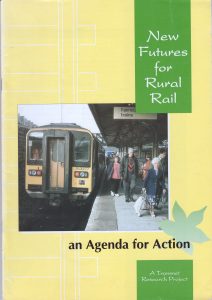 We launched it at the National Railway Museum in 1993. This paper is my own personal revision of ‘New Futures’, throwing up ideas and suggestions for Community Rail that can go forward over the next ten years.
We launched it at the National Railway Museum in 1993. This paper is my own personal revision of ‘New Futures’, throwing up ideas and suggestions for Community Rail that can go forward over the next ten years.
Back in the 1990s, local railways were struggling and the main priority was to build use of what was there. We’ve moved on from that and part of Community Rail’s role is to politely not accept what we’re given but keep pressing, with well-reasoned arguments, why rail needs to grow. That requires further electrification, improved capacity to allow more services, better quality stations and new ones, as well as line re-openings where there’s a case and good links to the re-fashioned HS2 projects. Getting better access to and from stations by bus, bike and foot are as important as the train service itself.
Community Rail has successfully embedded itself within the consultation and decision-making process at a local level with TOCs, Network Rail and Local transport authorities – helping to establish a new more powerful and proactive role in railway planning. This has not only allowed the CRPs to evidence need for change and work with colleagues across the industry but to support activity and new ways of thinking/doing.
Today, with over 70 community rail partnerships and hundreds of station groups, ‘community rail’ is no longer a purely ‘rural’ initiative, it includes inner urban areas as much as rural branch lines. And it isn’t just about the hardware of the railway; it’s active across a wide range of activities which back then we’d have thought way beyond the scope of what railways should be about.
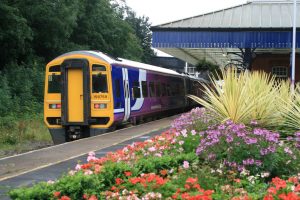
Mental health, loneliness, hate crime, addressing climate change, and lots more, often using art to get people involved and create stations as places that are a delight to use, not places to endure while you wait for your train. Mad optimism? No, it’s already there at some local stations – Smethwick Rolfe Street, Moorthorpe, Kent’s Bank, Burntisland, Beccles, Hindley, Yatton, Heaton Chapel, Betws-y-Coed, Llandovery and dozens more.
What they add up to is making rail more people-friendly and encouraging people to use the train and value their local station as a community hub. That feeds back into the really big one of the Climate Emergency. Who was it who once said ‘Think Global – Act Local’?
This paper is very much ‘work in progress’ – I welcome feedback. It represents a small contribution to the process of growing Community Rail – a healthy and vibrant movement which began with no resources and a lot of scepticism, in the kitchen of a terraced house in Huddersfield thirty years ago. Thanks to all who have contributed to its creation and continued evolution.
Many thanks to all who contributed to this paper and particular thanks to Community Rail Network, GBR Transition Team, Northern, Network Rail, Community Rail Lancashire, Community Rail Cumbria, Transport for the North, Devon and Cornwall Rail Partnership and Cheshire Best Kept Stations for comment and in some cases photos.
Paul Salveson, Bolton, January 2022
……………………………………………………….
Contents
Summary
- A unique opportunity
- Are we getting short of steam?
- Will TOCs still have a role in Community Rail?
- The continuing importance of Local Government
- Community Rail has grown – but there’s still work to do
- Station friends, partnerships and business adoption
- The new railway architecture
- Great British Railways and ‘Community Rail’
- What should a Community Rail Partnership be about?
- Catalysts for change
- Inter-City Community Rail?
- Maximising Social Value
- Developing ‘Community Rail Enterprise’
- Back to the land
- Arts-led rail regeneration
- Away from ‘big is best’ mentality in procurement
- Building awareness in the industry
- Professionalising Community Rail
- Rail re-openings
- Where next?
…………………………………….
BUILDING ON SUCCESS: future directions for Community Rail
Summary
This paper argues that the current restructuring within the railway industry presents a unique opportunity for Community Rail (CR) to up its game and become more ambitious, building on its strengths and becoming more entrepreneurial. It needs to shout its achievements much more loudly, or risk losing vital external support. At the same time, there is a need to ‘return to basics’ and make the aim of increasing use of local railways – actual ridership and also maximising use of assets – an additional ‘pillar’ of the Community Rail Development Strategy.
Maintaining and developing a close partnership with its existing partners in the industry, particularly the train operating companies, is crucial. Train companies and Network Rail should work with the Community Rail Network and CRPs to build a stronger awareness amongst all railway staff about the value and importance of Community Rail. ’Community Rail’ should become a professional career with appropriate accreditation, in partnership with the further and higher education sector.
Building an equally strong relationship with the new Great British Railways (GBR) is of equal importance. I argue for a GBR Community Unit with a dedicated director at headquarters level and community engagement mangers within the regional divisions, working closely with the TOCs and CRPs who should be incentivised to develop ambitious projects, assisted by a ‘Community Rail Enterprise Challenge’ funded by GBR.
These projects could range from developing integrated bus links, promoting walking and cycling schemes including bike hire, to station and on-train catering and other station activities which bring passenger and wider benefits. Making greater use of railway land e.g. for cultivating edible produce, is a further opportunity.
Community Rail should be resourced to take on issues around mental health, hate crime, anti-social behaviour and loneliness, each of which impact on the railways in different ways. There is a strong argument for some CRPs developing specialisms e.g. work with schools, arts or other themes, and sharing that expertise around the network.
Local government, including the ‘Combined Authorities’ and sub-national bodies such as Transport for the North and Midlands Connect have a crucial part to play. Community Rail can help address wider policy areas beyond a narrow ‘transport’ focus.
New community rail partnerships should be encouraged through a ‘Community Rail Partnership Growth Fund’ which helps CRPs get off the ground and develop, rather than using existing resources which would have the effect of ‘spreading the jam more thinly’ and penalising existing CRPs.
Finally, having a community rail partnership isn’t a substitute for having a frequent and reliable train service. It can do much to build the case for investment as some CRPs have already done. A good CRP can make the most of enhanced frequencies, better trains or even new stations and routes.
………………………………………………………………….
1. A unique opportunity
The Government’s new White Paper (the ‘Williams-Shapps Pan for Rail’) spells it out:
“Community rail groups already play an important role in supporting a thriving rail network across the country, including through strengthening initiatives with local understanding, improving rail’s social impact and engaging partners such as schools and local businesses. Together, the regional divisions and community rail groups will be able to work more closely with each other, helping to maximise recovery from the pandemic by reinvigorating rail travel for leisure and tourism, particularly in our protected landscapes. They can also advise on how to improve active travel connections to stations, supporting connectivity in rural areas and working together to improve facilities at stations and on trains.” – Great British Railways: The Williams-Shapps Plan for Rail, 2021 s. 13 p.45
The railway industry is going through some major changes, following on from the Williams-Shapps report. Nothing will stay the same. ‘Community Rail’ (CR) and ‘community rail partnerships’ (CRPs) get very positive mention in the White Paper, even with some suggestions that CRPs could potentially take on the running of some local lines (going back to the early days of community rail and ‘microfranchising’). That’s too big a leap for now, though there may be scope for some smaller operators to enter the market, possibly as partners with larger established operators.
While the industry is going through major changes, not least with the formation of Great British Railways and post-Covid recovery challenges, serious thought should be given to building on the success of Community Rail in the next ten years, rather than assuming it just carries on ‘as normal’. There no longer is a ‘normal’. All the encouragement that could be possibly asked for is in the White Paper. It’s too good an opportunity to miss.

Rufus Boyd, Programme Director (Passenger and Freight Services) at GBR’s Transition Team told me: “It is a challenging time for the rail industry and high on the agenda post-Covid is the need to demonstrate value for money. Community Rail Partnerships (CRPs) have proved themselves time and again as making a difference to customers at a price the railway can afford. I hope that CRPs continue to build on the success that they’ve so far demonstrated as we move towards building a railway that puts customers and its communities at its heart.”
It’s all about building on success, not a drastic change of direction; and certainly not about ‘make do and mend’ solutions that have bedevelled railway thinking for decades. CRPs need to be more ambitious. One TOC manager bemoaned the modest scale of some CRP’s ambitions, proposing projects costing in the ‘low thousands’ when they should be developing initiatives substantially greater that can demonstrate value (not purely monetary but that’s important) and make a real difference.
So, my view – having been involved in Community Rail since its inception – is that now is the time to demonstrate that it can do much more – contributing towards attracting passengers back to rail and bringing innovation to local rail services which contribute towards reducing costs by getting more out of our railways. And, of course, the big challenge is ensuring that rail plays the fullest possible part in addressing climate change – which takes us back to filling those trains and getting people out of cars.
This paper argues for a wider role for CR, embedded firmly alongside the new structure which will be led by Great British Railways (GBR). It should retain and expand its independence, dynamism and creativity. I’m talking reform and creative evolution, not revolution. Let’s use and develop the ‘four pillars’ enshrined in the Government’s Community Rail Development Strategy, and take each of them further. They are:
- Providing a voice for the community
- Promoting sustainable and healthy travel (including ‘the extra mile’)
- Bringing communities together and supporting diversity and inclusion
- Supporting social and economic development
In the light of post-Covid challenges, I’d be inclined to go back to one of the early objectives of Community Rail and add a fifth – ‘growing ridership and maximising use of assets’. It’s surprising that the aim of growing patronage wasn’t one of the ‘pillars’ – it’s fundamental to what community rail does, and is needed more than ever. I’d add ‘maximising use of assets’ as a complementary extra, making the most of the railway estate – ranging from buildings to unused land and also rolling stock. The inside and outside of a train has unmet possibilities. Too ofen our train interiors are dull and lifeless – with a tendency sometimes to go the opposite way and plaster windows with advertising, preventing passenegers from seeing out! Train operators should realise that one of their biggest marketing assets is the view from the window. OK, I digress, but it bugs me – and many others.
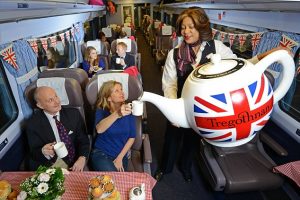
So each of the ‘pillars’ can reinforce each other, like any well-constructed building. Lots has been achieved already and the focus of this paper is perhaps more on the fourth pillar, social and economic development (and perhaps the suggested ‘fifth amendment’), but all are relevant and complementary.
2. Are we getting short of steam?
There is a view amongst some that ‘Community Rail’ itself is not punching its weight – or could do more. One senior industry source told me: “At the moment I feel CR lacks energy and dynamism…….it must diversify to survive. It needs to represent a broader church of interest and interests…spread its wings into hard urban areas… It must engage with bodies that represent the under-privileged and help them with basic skills, possibly those that lead to proper employment in the railway. It must better support children’s education and make a contribution to making the railway safer for everyone to use; women, the disabled and those with mental health or learning issues. CR can help us, along with station adopters, to wage war on crime and vandalism on the railway.”
I showed this quote to a good friend with long experience in CR – his response was unprintable! The unpalatable fact is that it’s good to be challenged, even when we may not agree with what’s being said.
What do you think?
Many CRPs are already active in these ‘hard urban areas’. But, whether you think that statement is fair or unfair, if that is someone’s perception (and someone with considerable influence) it needs to be listened to carefully. What it illustrates is that CRPs are quite poor at trumpeting their own successes. In such a media-savvy age that is a real weakness that needs addressing more strongly. Even local schemes, if they’re innovative and exciting, could get national exposure but too often CRPs neglect that all-important press release.
CR is already active in many ‘hard urban areas’ and the work of Community Rail Lancashire in education is outstanding. Similarly, the work of CRPs such as The Bentham Line and Cumbria around mental health issues is amazing and well recognised through numerous awards. South East Lancashire CRP has done pioneering work around ‘hate crime’ (picking up a top prize at the 2021 Community Rail Awards) and certainly works in hard urban areas. But it’s patchy – and anyone in CR would say they could do so much more with the right level of resources and long-term stability. establishment of Great British Railways (GBR) offers real opportunities for Community Rail in the UK, particularly in England.
Community rail partnerships could broaden their outlook a bit more and link up with local authority travel planning initatives. Some already do, but they are the exception. That implies becoming more savvy about ‘highways’ issues as well as recreational travel. It can’t be said too often – CRPs must look beyond ‘the railway fence’.
I’m very much aware of the different approaches in Scotland and to an extent in Wales. Northern Ireland remains isolated from CR despite attempts to change that. That said, I hope some of the suggestions in this paper will have a relevance to the devolved nations.
3. Will train operators still have a role in Community Rail?
The train operating companies (TOCs) will be responsible for delivering the new post-franchising ‘Passenger Service Contracts’. Up to now, the TOCs have had a key role in working with community rail groups.
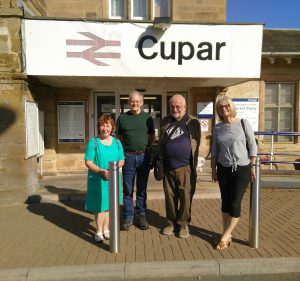
Will that continue? It should. Within the PSCs the train operator should be expected to work positively with the relevant community rail organisations and station friends groups, with that co-operation clearly specified in the PSC. As one TOC manager, with years of experience in supporting community rail, said “The future scope of the TOC role is still to be finalised, but I think there needs to be some local responsibility and autonomy within the framework set by GBR, as GBR is never going to be in touch with local markets and community needs in the way a local TOC can be – so there’s some work to be done there to get that right, I reckon.”
He’s absolutely right. Will CR funding still be channelled through the TOC? It makes sense, to ensure a close structural link between TOC and CRP, and if an operator wished to support a particular initiative or project this should be encouraged.
An interesting challenge is how to gauge the level of funding. Should CRPs be ‘paid by results’? Maybe it should be a combination of existing funding, support for an agreed action plan that meets the demands of the ‘pillars’ and encourages new development – but with incentives to develop further.
It’s important that CRPs seek to broaden their funding base and not assume rail funding will continue forever at the same level. Lots of things CRPs do is of value way beyond the rail industry, and there are funding streams out there which we don’t often tap into, e.g. in community arts, heritage lottery and numerous social funds. ‘Sustainable transport funding’ isn’t just about cycling and walking – it presents an opportunity to link up with rail and bus and get the best from each. CRPs can offer train operators a degree of knowledge – and contacts – which rail-focussed managers don’t have.
The relationship between the CRP and TOC could, and should, expand. The TOCs will still be major employers and there is considerable scope for community rail partnerships working with TOCs on recruitment and training issues, helping them to recruit a diverse workforce, as well on the ‘classic’ community rail issues.
They should, in conjunction with the TOC, build links with the unions in the company. Hundreds of union members are involved positively in CR projects but the unions per se have little if any involvement, which is a pity.
Many TOCs have come to realise that CRPs are important conduits for passenger issues, feeding in informed and knowledgeable views that help shape a positive passenger experience and stimulate service improvements. And CRPs do important work in the community which help reduce trespass and vandalism, issues on everyone’s agenda, complementing the work of British Transport Police.
4. The importance of Local Government and the Combined Authorities
Traditionally, local government has been a major sponsor of Community Rail and still hosts some CRPs; an average of about 20% of CRP funding comes from local authorities. However, the impact of cuts has forced some CRPs to re-think this reliance and become not-for-profit companies that are more dependent on funding through the railway industry, mostly via franchise contracts and their replacements in National Rail Contracts. This has saved many CRPs from disaster but at the same time creates a risk of over-reliance on a single source of funding (which equally applies if it’s from central government via the TOC).
Which comes back to the need to widen Community Rail’s funding base.
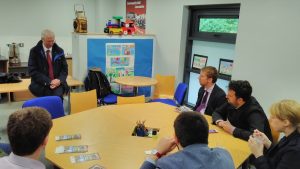
Many CRPs value a local authority input even when they don’t supply any core funding but sometimes pots of money available via local authorities don’t get noticed. Local government is the way in to a huge range of community services including housing, ‘place’, education, economic regeneration as well as remaining transport functions. In some ways, it’s the ‘non-transport’ areas which are the most important and where Community Rail could contribute more.
There needs to be stronger relationships with elected members, as well as council officers. At the end of the day it’s the members who make decisions on funding and unless the ground has been well prepared, the importance of a CRP will go unrecognised. That needs careful ‘stakeholder mapping’ to identify key politicians and officers, being aware of who sits on key committees and sub/regional bodies such as combined authorities and TfN/Midlands Connect.
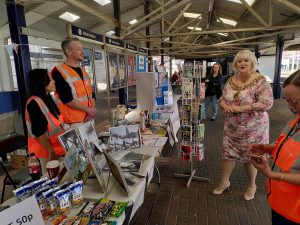
Inviting elected members to events that demonstrate what the CRP is doing is easy to do, if the will is there. That should be re-inforced by regular press releases to the local media but also national media if it’s an interesting project that might just speak an editor’s interest.
There are specific issues in the ‘combined authorities’ – the former PTE areas in the North and Midlands. Strangely, a few have shied away from engagement with community rail, perhaps still seeing it as a ‘rural’ thing. Even some of the positive ones, such as Transport for Greater Manchester, are not able to provide core funding for CRPs – but do support individual projects. I think the combined authorities are missing a trick and the CRPs themselves need to up their game and ‘play the political game’ with the city region mayors, who wield increasing power and influence.
A gap at the regional level
Sub-national transport bodies such as Transport for the North and Midlands Connect have a really important part to play here and their ‘strategic transportplans’ should recognise the opportunitities for doing more on community rail. Which leads me nicely on to a gap in the current community rail structure, at the ‘regional’ level. The Community Rail Network covers the UK as a whole and has officers who have sub-national responsibilities. However, I woudla rgue that there should be ‘regional’ CRNs, under the umbrella of CRN but with strong representation of the CRPs within the region. These ‘regional CRNs’ should have paid staff and a base and buld strong links with the above-mentioned sub-national transport bodies but also the combined authorities such as Greater Manchester, Liverpool City Region, South and West Yorkshire and West Midlands.
A predominantly urban CRP will have different issues and priorities to address than say a CRP along a rural line in East Anglia or Cornwall.
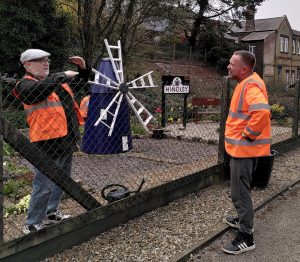
Issues around diversity and inclusion, challenging hate crime, trespass and vandalism may well have a greater impact in urban areas, though even rural areas are not immune to them. Building the case for improved frequencies, longer and better trains and other improvements – which the CRP can help make the most of through getting publicity out into the community – is important.
A community-based approach can help bolster local line identities within a combined authority area such as Merseytravel, West and South Yorkshire, West Midlands or Greater Manchester, with scope for community art work at local stations which have been proved to reduce vandalism and create a more welcoming atmosphere. The Tyne and Wear Metro led the field on this but many more have followed. The Urban Transport Group, which does what the label on the tin says, could help promote community rail initiatives amongst its members and share good practice.
5. Community Rail has grown in strength – but there’s still work to do
Community Rail has achieved a lot with very little since its formation in the mid-90s. There are now 74 CRPs across the UK, nearly all employing paid staff (at least south of the Scottish border) though this is often just one person, sometimes working part-time. Today’s community rail movement is in a far stronger position than it was 20 years ago.
Alongside CRPs there are hundreds of station adoption groups/station friends, many doing amazing work with no paid staff. CR is no longer a ‘would you mind?’ extra for operators. It is a contractual obligation. How well they get behind, promote and support CR counts towards their performance and thus the fees they can earn.
Community Rail is supported by the Community Rail Network which has grown in strength and influence and provides a range of services to its membership. It is a highly effective network, supported by Government and industry funding, light years away from the early days when we were very much finding our way. If I was completely honest
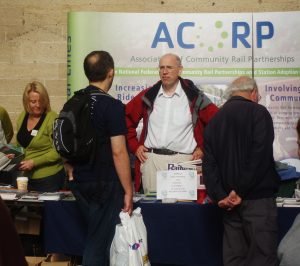
I’d say that I regret that some of the ‘fun’ – but valuable – activities have been lost, not least the so-called ‘jollies’ to experience different regional railways around Europe, from which so much was learned and so many enduring friendships formed. One thing I’ve learned in 50 years of campaigning and community action is the importance of ‘the social’ and building networks based on trust.
Community rail partnerships are independent, but closely allied to, the railway industry. That’s the right position. Most of the things they do are with the agreement of TOCs or Network Rail. This independence can be an advantage, bringing new ideas and energy to rail. But it can also be like banging your head against a wall, with CRPs not taken seriously by rail managers in some parts of the business, franchise obligations or not. It’s fine having a ‘community manager’ but if their colleagues in other areas don’t know what you do, there can be problems. This is explored in a later section (‘Building Awareness in the Industry’).
One area that could be explored further is the potential for CRPs to collaborate or even combine with neighbouring partnerships to create stronger entities, without losing their grassroots base. Many CRPs (e.g. South East Lancs CRP and CR Lancashire) already work together and the former Sussex CRP has expanded to include a large swathe of the South-east and is now the South-east England CRP.
An alternative, perhaps preferable approach to mergers, could be for CRPs to share some ‘back office’ functions, e.g. finance and general administration, as well as some joint initiatives.
Could the Community Rail Network develop its own ‘regional divisions’ which work with GBR but also provide some administrative support to CRPs? A stronger regional network of CRPs would have many benefits, including networking and sharing ideas.
The proposed ‘Community Rail Enterprises’ (CREs – see below) could be based on community interest companies formed with ownership covering more than one CRP.
6. Station friends, partnerships and business adoption
Once again, the White Paper offers encouragement:
“There are real opportunities for the railways to do more to support local economic growth, such as encouraging and supporting small independent retailers on the rail estate. This could extend more widely, with greater emphasis on place and social value. Priorities will differ across the network: in rural areas, community rail partnerships can provide social connections to tackle loneliness, whilst easy connections to our national landscapes can improve health and wellbeing. Reusing existing rail buildings for services such as training, community hubs and education, as Network Rail has already done in Bolton, could reduce costs for the voluntary sector and improve services for local residents.” Great British Railways: The Williams-Shapps Plan for Rail, 2021 15 p.44
The role of station friends/station partnerships should remain largely voluntary (as with rail user groups), working with CRPs, GBR and train companies and acting as a link into local communities, though some could do more at their stations e.g. cafes and art galleries. It has to be said that depending on voluntary effort is not the panacea that some think.
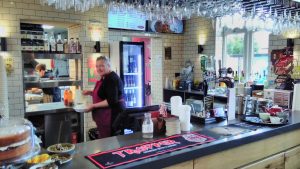
Nice if you can get it but the reality often is that it’s easier where you have a pool of retired professionals with time on their hands. As a general rule, the more deprived the area, the fewer these potential volunteers are to be easily found and more intensive efforts are needed to engage with communities and build local capacity and confidence. Working with local voluntary sector coordinating bodies (the ‘CVS’ network) is a useful ‘way in’. South East Lancashire CRP has a close relationship with Bolton CVS which manages its staff budget but also provides wider links to the area’s very diverse communities.
This is not at all to give up on volunteering in a railway context but to widen the pool of volunteers, combined with realism on how much can be achieved just with volunteers.
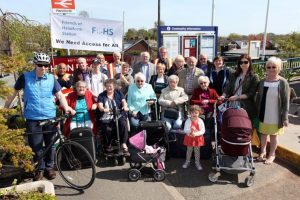
This should involve working more closely with local voluntary sector co-ordinating bodies and offering volunteers something in return for their input. Traditionally, this has meant provision of some travel facilities, which can be a powerful inducement (and contrary to the fears of some rail managers, is seldom abused). But for younger people there could be scope for opening up training and employment opportunities on the railway.
Some station groups have potential to develop much more as social enterprises, particularly at some of the bigger locations, e.g.

Kilmarnock and Bolton, with charitable organisations or CICs employing staff as well as using volunteers. Could some stations be ‘adopted’ by a local business/es to promote their services in return for provided some services at the station? Brighouse station is a good example of support from local businesses.
Irlam is probably the outstanding example of ‘business adoption’, the station building being run by the Hamilton Davies Trust with a flourishing cafe and meeting space, enhanced by superb artwork and memorabilia. However, there are many more and the work of ScotRail in community and business adoption of stations over many years is outstanding, with excellent examples in both rural and inner city areas of Glasgow.
Another potentially fruitful area for CRPs to work with station groups is developing station travel plans and accessibility audits. Again, this is something that should be a ‘paid for’ project, probably via GBR in the future, but involving the relevant local authority. Community Rail Network has been proactive in supporting community-led travel planning and has produced a helpful toolkit guide.
7. The new railway architecture
The establishment of ‘Great British Railways’ (GBR) is a major development in UK rail; it will change how railways are managed dramatically. It will administer ‘passenger service contracts’ in which the actual train service delivery is provided by private companies to a clear contract. Unlike the current system, there will be little room for manoeuvre (or creativity) by the train operating companies. The clearly stated model for this is TfL/London Overground. Yet the TfL Rail contracting model doesn’t readily lend itself easily to CR and we don’t want to see mass centralisation or corporatisation of Community Rail. At the same time, the establishment of GBR will be an opportunity to bring CR into the heart of the railway, spreading the positive experience of some parts of Network Rail (e.g. in the North-West) to the country as a whole.
GBR will have wide powers. The DfT press release said “A new public body, Great British Railways (GBR), will integrate the railways, owning the infrastructure, collecting fare revenue, running and planning the network, and setting most fares and timetables.” It went on to say that “Local communities will work closely with GBR on designing services with local leaders given greater control over local ticketing, timetables and stations. The new model will encourage innovative bidders, such as community rail partnerships who want to bid for the GBR contract to operate their local branch lines.”
Many CRPs are already working with the industry on service planning issues and this needs to be embedded in the new structure; as for bidding for contracts to operate local branch lines, that’s an interesting challenge but one which CRPs as currently structured would, in most cases, be ill-equipped to respond to at the moment. But it does point to a more pro-active and operational role for CRPs. How do we get there? And is it realistic?
8. GBR and Community Rail
If GBR is to be focused on passengers and communities – and their needs – shouldn’t some of what CRPs now do form part of GBR’s core programme, from Day One? There is scope for CRPs to have long-term agreements with GBR to develop specific services, e.g. work with schools, mental health, refugees or ‘employability’ which help give long-term stability to CRPs.
We know there will be regional divisions of GBR and surely it makes sense for these to have strong roots in the communities they cover? The regional divisions of GBR should each have a ‘community unit’ that works closely with its community partners, with a small team at HQ level supported by a director with specific responsibility for ‘Community Integration’, working closely with Community Rail Network.
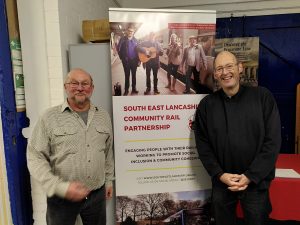
GBR should have regional boards which oversee the work of the organisation as a whole and include community representatives, including at least one CRP representative.
It’s important that the suggested dedicated community teams within GBR at the regional level are incentivised to ‘reach out’ and work with CRPs, CRN and a wide range of community organisations. Their role should be to help things happen, not act as a barrier.
Across the rail industry, community engagement should be treated as a skill to be learned just like any other, with training programmes (suitably accredited) that equip the managers of today and tomorrow with the knowledge and skill to be fully effective in this important field. GBR could work with Community Rail Network and the higher education sector to encourage ‘community engagement’ modules within Transport Studies courses – and ‘Community Development and Transport’ within community development courses (see below on ‘Professionalising Community Rail’).
9. What should a ‘community rail partnership’ be about?
Williams – Shapps gives strong encouragement to CRPs as we’ve seen above. Section 13 is headed “Community rail partnerships will be empowered to strengthen rail’s social and economic impact”. But there is more in the White Paper which may not mention ‘community rail’ specifically but opens up some exciting opportunities, such as:
“New, locally-led innovation schemes will unlock smarter working and support growth. To achieve real change, there needs to be renewed emphasis on locally-led innovation and new ways of working. Those who work on the railways should be able to suggest and lead innovation in their workplaces or local network. Great British Railways will support this, through greater adoption of design sprints and competitions to identify and solve challenges at pace locally and regionally. Targeted partnerships between Great British Railways, its partners and other transport authorities, investors and start-ups will enable collaboration between the public and private sectors to push innovative solutions forward. Best practice will be shared across the sector.” Great British Railways: The Williams-Shapps Plan for Rail, 2021 s. 49, p.83
Community Rail must rise to these challenges presented by Williams – Shapps. It’s a once in a generation opportunity and the CR movement must think big. Having a community rail partnership isn’t a substitute for having a frequent and reliable train service, it can be a means of achieving it, helping to build the case for investment as some CRPs have already done (e.g. Community Rail Lancashire and ‘Todmorden Curve’ and more recently the re-opening of the Okehampton Line, strongly promoted by the Devon and Cornwall Rail Partnership). A good CRP can make the most of enhanced frequencies, better trains or even new stations and routes.
There’s much more. It isn’t about a single, unified approach but one in which ‘a hundreds flowers bloom’. Existing CRPs are enormously varied in terms of composition and activities, reflecting the very different geography of their areas of operation and the interests of the CRP partners. The ‘accreditation’ process has brought a baseline of good practice to CRPs and should continue in its present form but, arguably, be a bit more demanding and questioning. Re-accreditation should not be an almost automatic process; public money is involved and if there are clear signs that the CRP is under-performing that should be addressed. Not an easy one and it needs a sensitive approach by the funding bodies with Community Rail Network. Equally, outstanding work should be rewarded. There should be more sharing of good practice now we are at least partly out of lockdown.
The annual Community Rail Awards is a great occasion to meet up and hear about great projects, but the only other annual event is the DfT-sponsored Community Rail conference each March.
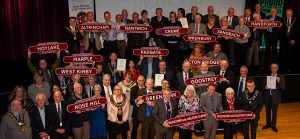
Train operators are often obliged to organise their own conference from community rail groups in their area but the CRPs themselves, with support from the Community Rail Network, could do more to develop regional collaboration.
The activities which CRPs are involved in are hugely varied and, assuming a core emphasis on assuring local accountability, good governance and ensuring that all sections of the community are reached out to, should be able to reflect local needs and priorities.
Some act as grassroots-based advocates to promote rail travel, stressing rail’s contribution to the health and sustainability agendas. Others are involved in tourism promotion, while some bring considerable expertise to service planning issues. As highlighted above, some engage in pioneering work around mental health and work with schools. In a small number of cases, some are involved in ‘commercial’ activities, others sponsor local feeder bus services (e.g. SE Lancs CRP). There is a good case for encouraging some CRPs to build on their strengths (e.g. education, art, heritage, work with the refugee community) and offer that expertise to other CRPs around the network.
It is hugely encouraging to see CRPs grouping together on specific issues including the award-winning Community Rail Education Network. There is room for lots more – in the Arts, work around Mental Health, Urban Planning and Design, ‘Stations of Sanctuary’ working with refugees and asylum seekers, to name just a few. The emergence of Women in Community Rail is a great step forward which has begun to change ingrained attitudes. Should there be a Community Rail LGBT Network? A few years ago it would have been laughed out of court – but Network Rail is well ahead of the game in encouraging diversity and networking amongst its employees. Community Rail should catch up (and overtake!).
There is a growing agenda to be part of the wider sustainability agenda which is great and this could be developed into particular strands of work (e.g. ‘greening your station’). The best contribution CRPs can make to a greener Britain is getting more people using trains that are already there, getting them to and from the station by sustainable means. At the same time, CRPs need to be part of wider local initiatives around sustainability, demonstrating that rail is part of the solution.
CRPs are not lobbying groups but many have developed expertise and trust in honing services to local needs. One senior CRP manager said “I’d say too that the best thing a CRP can do to help the community is to work to ensure the train service is as relevant and useful as possible to that community (and is well used and stays that way) and that where there is sufficient unmet local need, the service expands to meet it where possible.” That will involve the future CRP working closely with the GBR divisions but also ensuring that the ‘TOC of the future’, working to a Passenger Service Contract, is aware and engaged with its CRPs and uses their local knowledge and expertise, as argued above.
In some cases, partnerships can play a direct role in developing new technology that improves the viability of rural lines. Hi-Trans in the North of Scotland is leading the way with alternative sources to traditional diesel for some of the more remote lines which will never justify conventional electrification. Vivarail’s battery and hydrogen powered trains could help revolutionise some branch lines and a partnership with a CRP or rail-based social enterprise could be immensely effective.
Getting people back onto rail, post-Covid, whatever sort of train, is the key challenge we face. CR has a vital role to play in nurturing that rail market and acting as a bridge between ‘communities’ and ‘the railway’ without being fringe lobbyists. It’s about enabling and making good things happen.
10. Catalysts for change
So if we see CRPs as bodies that enable good things to happen – community development agencies along railway corridors, rather than being too narrowly focused on the railway in isolation – it helps structure how we see CR developing. It may sound heretical but you don’t need strong community interest before forming a CRP. It’s the job of the CRP to create it. There was no community demand for a community rail partnership on the Penistone Line back in 1993, but we went ahead and set up the Penistone Line Partnership and the community engagement came along after. On many more urban routes there is little existing community engagement, even through station friends groups. A CRP can be about making community engagement happen, starting off small, working with the existing community organisations in their area. There should be a role for the future GBR regional divisions to work with Community Rail Network and local agencies to identify potential new CRPs and assist with funding new developments, as argued elsewhere in this paper.
Funding is an issue for most CRPs. They are dependent on Government funding, which is inevitably short term. Few generate significant revenue from activities. In the past, it has been suggested that CRPs should escape from the cycle of government funding and look to generating revenue-earning activities. Perhaps now is the time to revisit that. However, some important and necessary activities will never be ‘commercial’ and never should be. I’d argue this is where GBR should step in.
The CRPs could at least in part function as GBR’s delivery arm for certain ‘deliverables’. For example, if the regional divisions of GBR wanted to develop work with primary schools, rather than try to build up the expertise themselves, they should buy the actual deliverable from one or more CRP in their division, who already have the expertise. Potentially (as suggested above) individual CRPs could develop strengths in certain areas e.g. education, mental health, arts and other fields, alongside more general community engagement work.
11. InterCity Community Rail
Community Rail needs to cover more of the rail network. It has moved on since the days when it was mainly about rural branch lines. As the ‘industry source’ commented, it needs to be (and already is) working in gritty urban areas. It’s also active on Inter-City routes and could do more.
All the TOCs providing InterCity services have incentives in their contracts to support community rail and this is an exciting growth area. Open access Grand Central, once described by its late MD Tom Clift as ‘a long distance community railway’ has a great record of community engagement. On routes like the West Coast Main Line there are stations like Oxenholme, Wigan North Western, Preston and Penrith with a strong community ‘feel’ and highly committed staff who like working with the community, supported by their TOC Avanti West Coast. Train operators such as Cross Country (which has no stations to manage but supports a range of CR projects), LNER, Great Western and East Midlands are all proactive on Community Rail projects.
Larger stations on main line routes could develop as community hubs, using vacant space for community shops, art galleries and more. There’s too much an emphasis on the ‘corporate’ chains providing cafe facilities and not enough encouragement to good quality, locally-based cafes at larger stations.
All rail franchises or contracts have support for Community Rail embedded within them, thanks to the support of DfT, and the devolved administrations for Wales and Scotland. In the new GBR settlement that must not only continue, but expand.
That means in many places new CRPs being formed, with new money available for them to develop. As things stand it is difficult, to put it mildly, to set up a new CRP even if it has strong support – because the current CRP budget is allocated to existing partnerships. That creates an impossible situation where potentially, existing CRPs are penalised if new CRPs are established. There must be dedicated funds for new CRPs – a ‘Community Rail New Growth Fund’ or the like, quite separate from existing CRPs. Funding would be conditional on meeting clear criteria, based on the existing accreditation process.
12. Maximising Social Value
The importance of the strongly social elements e.g. work on mental health, hate crime, work with schools, refugees and more, needs greater recognition and support. This work should be sponsored by the regional divisions of GBR and delivered by the CRPs and local community partners.
This ‘social’ programme e.g. work with schools and mental health, work with NEETs etc. while sponsored and paid for by GBR, should be supported by the relevant public sector body e.g. LEA, NHS, local council and delivered, on a clear contractual basis, by the community rail partnership, or a consortium of them, possibly in conjunction with an external third sector partner or partners. SE Lancs CRP’s work with refugees is being developed in partnership with the local City of Sanctuary, for example. Engaging in this sort of work would be impossible without close involvement of the relevant organisations.
It’s clear that ‘Social Value’ is becoming increasingly important in Government policy, in all areas, not just transport. One experienced CRP chair told me “The future train operating company contracts will be looking for a strong pay back to the Treasury for the financial support given and an important part of this will be the monetary value of the social aspects of activity by both the TOC and Community Rail. The earlier exercises in valuing Community Rail will need to be much more sophisticated to record , quantify and therefore demonstrate that this is not just a ‘good thing’ but of real value to the Exchequer, the economy and to the population. Having this as a monetary value will be an essential plank for the future survival and development of Community Rail.”
Some community activists will object to putting a cash value on their activity. But the world has moved on from the 1990s when we did stuff because we knew it was right. If Community Rail is to retain the support of Government it will need to demonstrate very clearly the benefits it brings, rather than just assuming that “it’s bloody obvious.” It might be to us, it won’t be to the Treasury.
A lot can be learnt from engaging and being a part of the wider ‘third sector’ which is highly developed in the UK with a huge resource of knowledge and expertise in lots of areas relevant to community rail. Some CRPs and station partnerships are active members of their local ‘CVS’ (Council for Voluntary Service, or similar co-ordinating body for the local third sector) but a lot aren’t. They should be. It would help CRPs develop their local knowledge, build awareness of key policy issues and develop contacts. For the ‘third sector’ it would give them a way in to transport issues which are often seen as important but difficult to engage with.
13. Developing ‘Community Rail Enterprises’
Community Rail should be enabled, where it wants to and where there’s the potential, to become more entrepreneurial, developing activities that bring in revenue – ranging from running (or enabling) bike hire, cafes and bars, tourist promotions, bus services, educational services, some local stations and even (cf Williams-Shapps) local rail services, in time. There’s no shortage of examples already, highlighted in CRN’s The Socially Enterprising Railway https://communityrail.org.uk/wp-content/uploads/2018/12/ACoRP-Social-Enterprising-Railway-Tooklit-1218.pdf
Developing long-term income streams from revenue-generating activities (which add value to the railway and enhance passenger experience) or from specific deliverables that are paid for by a commissioning body, is a sensible route to take, and Community Rail Network has been encouraging this through training and advice.
Some CRPs are already structured as social enterprises, often as ‘community interest companies’ or charitable incorporated organisations. They could do much more. Within existing CRPs, there are a number of activities that could be developed as standalone businesses, if the right investment was made. This isn’t the sort of thing that GBR could or should do, but it ought to be supportive and helpful.
Some CRPs already get involved in managing property (in partnership with TOCs and Network Rail), undertake business activities such as consultancy, training, etc. Part of the problem is that they’re stretched too far with grossly insufficient resources.
I’m suggesting that more CRPs develop into social enterprises – businesses, with social objectives. Let’s call them ‘Community Rail Enterprises’ (CREs). Alternatively, CRPs could act as an enabler for such bodies, doing the initial development work then floating the social enterprise off to be self-sustaining but keeping close links with the CRP. In many ways this is the way a community development agency should work but there’s a need for a flexible approach – which brings in valuable income to the parent CRP.
The CRP’s role could be to identify and develop rail-based commercial activities which bring tangible benefits to local communities, as well as supporting the railway. While the Williams-Shapps suggestion of CRPs bidding for contracts for their local lines smacks me as naive, there could be scope for CRPs – or enterprises which they help create – teaming up with larger businesses which may already have TOC status, to operate local services and possibly take on some peripheral (non-safety-critical) services which really enhance the rail offer.
An obvious ‘quick win’ is tourism, with a CRP working with an operator to provide additional services such as ‘The Staycation Express’ on the Settle-Carlisle and Vintage Trains (a community benefit society) on The Shakespeare Line. The Settle-Carlisle Railway Development Co. is a good example of the sort of enterprise I’m talking about. A potentially attractive area is developing feeder bus services. The example of Dalesbus, where a CIC identifies a network of bus routes which help promote sustainable tourism and contract services to local bus operators, is interesting. It avoids the high overheads of running the service directly and leaves the company free to promote the service and work with local businesses.
Bodies such as Transport for the North have shown a recognition of the importance of rail-led tourism in Covid recovery. Their recent report (‘Value of the North’s Visitor Economy and Transport in the Noth of England’ 2021) raises many important issues and has applicability across the UK.
Most successful businesses, social or not, usually start off small but need some capital. If the Government wants to see CR develop and take on the sort of things that Williams-Shapps suggests, it needs up-front investment.
My suggestion is for three or four pilot schemes across the country where there is some investment (let’s not call it funding) into creating or developing a ‘community enterprise’. This should cover a range of things including:
- Appropriate level of staffing
- Getting a suitable form of governance and board members – CIC model
- Business partners/investors
- Writing a business plan
- Some contribution towards implementation of projects
We should be looking at three or four year horizons. Some will fail, which is OK. Others will bloom. Getting CRPs out of the treadmill of short-term funding and conflicting demands and expectations is necessary and timely. It could be the next ‘great leap forward’ for Community Rail.
Given the Secretary of State’s enthusiasm for competitions (e.g. location of GBR HQ) why not a Government-sponsored competition for ‘The Community Rail Enterprise Challenge’ with substantial funds for three or four pilot projects around England.
The Community Rail Network (CRN) could build on its very useful work on social enterprise with more business advice and support. Effective local entrepreneurs (social or not!) understand the value of networking. CRPs and similar groups should be part of local business networks such as chambers of trade, Rotary Clubs and similar groups whose value may not be immediately obvious – but will bear fruit in the long run.
14. Back to the land (and the Great Bee Railway)
Community Rail has hardly tapped the huge potential of doing more with surplus railway land. The railway is a massive land owner; the 4th or 5th biggest in the country. We must make a greater contribution to improving the environment, its habitat for all species and to biodiversity. Europe and Britain have lost nearly 30% of its bee population. As one industry leader said “If the bees all die, we die. It’s as simple as that. We have massive tracts of land that barely see human feet on them. Why aren’t we seeding and flowering these tracts to attract bees and butterflies. Who knows, regional or local brands of railway honey?”
SE Lancashire CRP is already developing a ‘Railway BeeHives’ project at Wigan and there are other projects across the country. Network Rail has made important steps on biodiversity, and the Community Rail movement is developing a range of outstanding local projects. Greater Anglia is working with Norfolk Wildlife Trusts to promote biodiversity schemes through their station adoption programme.
Can we do more useful things with the railway’s land assets? Most railway land is in Network Rail hands so presumably will transfer to GBR; anyone who has tried dealing with the industry on land issues will know how difficult it is. The issue needs addressing, possibly by identifying surplus land which should for various reasons remain in railway ownership but which could be developed as wildlife havens, or – where public access is possible – as ‘railway parks’ or community allotments. One senior figure in local government said “I think there’s massive potential in using the vast amount of ‘nowt nor summat’ railway land holdings for gardens and parks. The big railway has finally realised it needs a sustainability strategy so I would have thought it would be very receptive. There’s also interplay with wider biodiversity / climate resilience aims of the big railway.”
This could best be done through a strategic lead by Network Rail/GBR with suitable parcels of land placed in a land bank for community use, leased to a community organisation (which could be local, regional or even national). Could there be scope for some land to be transferred to community land trusts to develop affordable housing, or community growing areas?
The example of the ‘Incredible Edible’ movement which started in Todmorden and features herb gardens on the station platforms, is really exciting. Encouragement should be given to use railway land, whether at stations or elsewhere, as space to grow stuff which can then be consumed locally. Bolton station’s ‘Platform Planters’ produced vegetables that were donated to a local co-operative cafe. Why not have station shops and cafes that sell produce that’s partly grown on the station itself?
15. Arts-led rail regeneration
Rail has a pretty good record in ‘public art’. There are some great examples of art work at stations such as, as well as art galleries at stations including Aberdour, Kinghorn, Bolton, Pollokshaws West, Wigan (both stations), Irlam, Nuneaton and many more. There are lots of reasons for encouraging public art at stations and along the railway corridor. The obvious benefit is that it makes stations nicer places to be. They are more welcoming, people-friendly and that in turn helps reduce anti-social behaviour. If people find stations more welcoming and less threatening, it stands to reason that they are more likely to use them.
The actual process of creating art at stations in itself is important. If done well, community rail art can involve hard-to-reach groups, children in inner-urban schools with limited horizons, and people who are social excluded. Lots of railway employees are talented artists, in many different media. We need to involve them much, much more. The exhibition of Railway Workers’ Art at the Platform Gallery on Bolton station was a good start, there’s scope for a lot more. Encouraging railway staff ticks many of the industry boxes about supporting employees and staff satisfaction.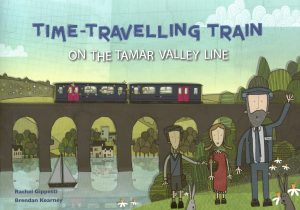
It needs doing well. Just throwing up a few pictures or a subway mural is fine but an arts-based approach needs to address the whole station environment rather than just being an add-on. We need to make our stations exciting and interesting places which showcase local talent. Take a look at the subway mural at Wigan North Western if you want a good example of how art can transform a rather dull 1970s station. But we’ve only just started!
There’s a lot of good work already happening. It would be good for artists and community rail groups involved in art work to link up more, perhaps through a Community Rail Network ‘sub-network’ of Community Rail Art. Some great examples are already showcased at the Community Rail Awards, with two categories directly arts-related and others which are in part.
A final point – any public artwork can suffer from the elements and there needs to be thought given to a) ongoing maintenance and b) in many cases recognising that the artwork will have a finite life and may require replacement. This is much easier to do if there is a station partnership or CRP focussed on the station taking responsibility for the works.
16. Away from the ‘big is best’ mentality in procurement
Why should catering (and other services) at larger stations be totally dominated by the big chains which have little if any commitment to locally sourced food and whose staff have no say in how the business is run? Community rail partnerships could work with the rail industry to establish retail facilities on stations – small, medium and large – which are exemplars of what the ‘circular economy’ looks like. Grown at or near the station, cooked on the premises and sold to rail passengers and local people who use the station as a destination in itself, with attractive station cafes which could also double as local art galleries and bookshops.
The same goes for locally-brewed beer, with ‘artisan’ breweries springing up at stations offering good quality beer in a pleasant environment. The record of success here, particularly at larger stations, is better than with coffee shops and other retail. As argued above, there is scope for much greater diversity in provision of catering at larger stations. How many large stations do you see a local social enterprise providing good quality snacks and coffee? Hardly any – they tend to be allowed to set up shop at stations where there’s no ‘commercial’ interest from the corporate giants.
One of the biggest challenges for Community Rail is to get the industry procurement managers to take community business seriously instead of seeing them as irrelevant and unprofessional. Too often procurement managers take the easy route and contract with a large chain rather than seeking out good quality local businesses that may offer a better service at similar or even lower costs. There’s much talk about keeping money circulating in the community – the circular economy – but rail has a long way to go to make it work in practice.
There is scope for doing so much more and one industry professional mentioned the scope for social enterprises taking on horticultural landscaping, maintenance of artwork and other aspects of station maintenance.
One aspect of this is cost. When I’ve mentioned the idea of social enterprises running cafes at busy stations the response from some TOCs has been cautious, assuming the potential tenant would want a ‘peppercorn’ rent. It doesn’t have to be so. Well-established social enterprises in many towns and cities pay full commercial rents and make money. If there is commercial potential at a busy station, why not offer it to a social enterprise that has a good record for quality and service, on a commercial basis? Or, in cases where the market potential is marginal, agree a tapered rent starting off low and growing as – and if – the business grows. This is what Northern did, with success, at Skipton with the Settle-Carlisle Development Company’s cafe, taking over from a failed private business. That required an ‘open book’ approach and a relationship of trust with the train operator.
That model could work with other TOCs or Network Rail – or GBR in the future – which could be brokered by the CRP. And let’s remember, at some smaller stations talk of a ‘commercial’ rent should be treated with care. A ‘commercial rent’ at some stations could be in £ hundreds a year, or less. It’s far better to have an appropriate business trading at a station than a boarded up building that will never be let because the rent expected is unrealistic and doesn’t reflect local market conditions.
17. Building awareness in the industry
Thirty years on from the establishment of the first CRP (actually in Devon and Cornwall), the lack of awareness of what ‘Community Rail’ is amongst some in the rail industry continues to surprise and sadden me. It’s far too important to be left just to a ‘stakeholder manager’ or similar, however well-intentioned, and should be embedded across the entire industry. So, how?
The future contracts for train operators need to incorporate some clear requirements for the operator (and this should also apply to GBR and former Network Rail staff) to develop awareness of Community Rail at all levels. This should include regular briefings to management teams but also publicity about CR activities in staff publications and social media. CRP officers should be invited to occasional staff briefings about activities they are involved in. All rail businesses have well-established ways of communicating with their employees, so occasional features or news snippets about community rail issues, especially where staff are involved, is a great help.
Every ‘new starter’ should have a half-day session on ‘Community Rail – what it means to you’ as part of their induction, which could include inviting a CRP officer to take part in the session.
During my time at Grand Central (not, of course, a franchised TOC), part of my job was to spend a day with ‘new starters’ – mostly Bradford-based staff for the new London service. Drivers, train managers and customer service assistants. Many of them became enthusiasts for community rail and fed in positive ideas. In turn, rail managers and front-line staff should be encouraged to attend some CRP meetings and offer insights into their work; this could also include depot visits and other activities which help cement relationships between CR and the industry. Why not offer new community rail officers a week’s secondment within a TOC or Network Rail, getting a real insight into how the railway works?
18. Professionalising Community Rail
It would be interesting to know how many people are employed in ‘community rail’ across the country, including CRPs and rail employees. Given there are over 70 CRPs and about 20 train operators, a conservative estimate would be 100 full-time equivalent jobs.
The professional backgrounds of these people will be enormously varied, with some coming from community development roles, marketing, or railway operating backgrounds. What they will all have in common is a lack of any formal qualifications for doing ‘community rail’.
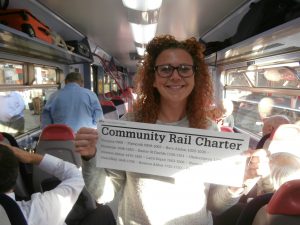
If you come into the job from a railway operations or engineering background, you probably won’t know a lot about community development. If you’re a former community worker, the intricacies of the railway industry will be beyond you.
By and large, people ‘get by’. Yet the industry needs to recognise that being a ‘community manager’ requires real skills, every bit as demanding as being a timetable planner, signalling engineer or train crew manager.
It’s about time we professionalised Community Rail. Not by excluding talented people either in the industry or in outside ‘community-related’ jobs, but offering opportunities to develop skills which better equip them to do community-related jobs, either as CRP or rail industry employees. This could be done through a mix of on and off the job training, working with higher education bodies across the country, with a shared core curriculum which includes:
- What the railway industry does, how it is structured
- The history of the railways and its impact on society
- How rail is part of the wider sustainability challenge
- The communities served by rail and their diverse needs
- Methods of community engagement
- The wider scene: local and national government
- Community Rail overview – including funding and governance
- Media relations
This should be suitably accredited. At school-leaving level, each rail business – and CRP – should have an apprenticeship scheme. Some TOCs, such as Northern, already have a good record, not only offering apprentices the opportunity to engage with CRPs but also an ‘Early Careers Programme’ which has a community dimension. At a higher level, there should be encouragement to gain post-graduate qualifications up to and including PhD level on aspects of Community Rail. Some TOCs have already sponsored PhD studentships. Let’s see more, with a greater emphasis on ‘people’ and ‘community’.
There are opportunities to include ‘Community Rail’ within some degree courses, particularly but not exclusively in Transport Studies. There are several universities offering courses in ‘Transport’ and sometimes specifically rail, e.g. Birmingham, Leeds and Glasgow. Yet the ‘people’ side of the railway, let alone ‘community rail’ doesn’t feature. It should, and there’s scope for engaging with the network of university transport academics to look at ways of doing this.
19. Rail re-openings
Community rail has traditionally fought shy of getting involved in rail re-openings, for good reason. Back in the late 1990s and early 2000s the practical possibility of re-opening a local railway, at least in England, was very small. Getting involved in complex and probably pointless campaigns would have sapped strength and resources which was better spent in supporting and developing what was already there, and had survived Beeching.
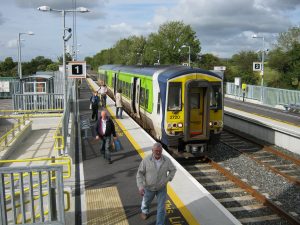
That caution need not apply in the 2020s, now there is broad support for re-openings with Government encouragement. Community rail partnerships are well placed to support and perhaps in certain cases lead on re-openings, particularly new stations along routes they cover. The recent re-opening of the Crediton to Okehamapton line for passenger services would not have happened without the years-long gentle pushing by the Devon and Cornwall Rail Partnership.
CRPs could act as a stimulus for more ambitious line re-openings, without necessarily being the lead body – which might be best done through a purpose-made organisation involving local authorities, the CRP and other agencies. SENRUG – The South-east Northumberland Rail Users Group – has aspirations to become a CRP and promote both existing services and support the re-opening of ’The Northumberland Line’ from Newcastle to Ashington and to Morpeth. Some more urban CRPs could work with other agencies to promote the case for light rail extensions (and encourage companies like Metrolink and Supertram to expand their community engagement).
20. Where next?
Community Rail has a great future. It has emerged from the worst of the Covid-19 period intact but, like everyone, feeling bruised.
Jools Townsend, Chief Executive of the Community Rail Network said “I think we can hold our heads very high about the way the movement has come through a very difficult year and a half, supporting communities and their resilience in a range of ways, responding to local needs. I also would highlight the ways that community rail has come together and pushed forward with promotional and engagement activities as we have emerged from pandemic restrictions – including a strong focus on supporting leisure travel opportunities and positioning rail travel as a big part of the solution to the climate emergency. A lot of what we and our members have done in recent months has been new and different, responding to what’s going on out there at a local and global level.”
Community Rail is embedded in many communities and there is strong support for it within the rail industry and Government – and, as this paper has argued perhaps to excess, a sense that it could do much more if it had the right tools. It must relentlessly trumpet its successes and ensure that it isn’t just preaching to the converted.
Why not a Treasury day out to visit some outstanding community rail lines and demonstrate at first-hand what has been achieved? Seeing really is believing.
A good friend in a train company made a key point in response to an earlier draft of this paper: “We have to make sure we achieve the twin aims of protecting all that’s best about Community Rail, whilst also evolving into new but relevant added value areas. The the clue is in the title – community rail. If it doesn’t involve both those elements, then it’s probably not the right thing for Community Rail to be doing, could be a dilution of resources and may be duplicating what others do. We also need to be pragmatic and realistic – whilst still being ambitious and aspirational – about the resources that might get allocated to Community Rail. We might not always be lucky enough to have the passionate advocates we have today at the heart of decision-making!”
Key recommendations:
- Great British Railways should have ‘Community Rail’ in its DNA, with a ‘Community Unit’ at HQ level and dedicated resource in each of the regional divisions
- Train operators should be incentivised to support community rail and station adoption groups through the Passenger Service Contracts. They should continue to act as channels for funding CRPs but also be encouraged to go beyond the ‘core’ funding proposition for schemes with identified benefits
- The ‘four pillars’ in the Government’s Community Rail Development Strategy should be reviewed to ensure that sustainability is at the heart of the strategy. A fifth pillar, ‘to increase passenger numbers and maximise railway assets’ should be added
- Community rail should be embedded in sub-national transport body strategies e.g. TfN, Midlands Connect etc. and also in the forthcoming Whole Industry Strategic Plan being developed by Network Rail and the GBR Transition Team
- Community Rail should ‘go regional’ with staffed regional structures under the umbrella of Community Rail Network but bringing together the CRPs within the region to provide a stronger strategic link to the combined authorities and sub-national transport bodies inclduing TfN and Midlands Connect. In the devolved nations, a simialr aprpoach could be adopted reflecting the political and social realities in each nation.
- Community rail partnerships should be encouraged to pull in wider sources of funding, both from other funders possibly external to rail but also from generating their own income streams in relevant areas which enhance the passenger experience
- There should be a new, dedicated ‘Community Rail Growth Fund’ administered by Community Rail Network on behalf of GBR to support new community rail partnerships where there is proven support locally
- Railway employers should be incentivised (and in some cases required) to ensure that Community Rail features in all aspects of the business, with all staff given the opportunity to be fully engaged, from induction throughout their railway careers
- The rail unions should be engaged much more in community rail activities, particularly in areas of mutual concern e.g. diversity and inclusion, combating hate crime, trespass and vandalism.
- Local government and combined authorities should be more engaged with Community Rail, recognising the contribution that CRPs in particular can make to a wider sustainability agenda.
- There should be a clear programme of training and development for all staff involved, or potentially involved, in community rail – from apprenticeships through to accredited further and higher education courses and PhD levels.
- There must be a sea-change in thinking amongst procurement managers to ensure that SMEs and social enterprises get the opportunity to bid for commercial contracts, as well ‘non-commercial’ station lets and right along the supply chain
- Consideration should be given to unused railway land being identified for community use, with the creation of allotments, ‘pocket parks’ or other facilities.
- Stations – small, medium and large – should be seen as community hubs which promote the communities they serve, offering locally-made produce, artwork and meeting space and information on local employment opportunities.
- There should be a ‘Community Rail Arts Network’ supported by Community Rail Network which shares best practice amongst artists, CRPs and station groups.
- A ‘Community Rail Enterprise Challenge’ should be launched and managed by DfT (or GBR in the future) with substantial funding for innovative ‘commercial’ schemes which help to grow rail patronage and improve the passenger experience.